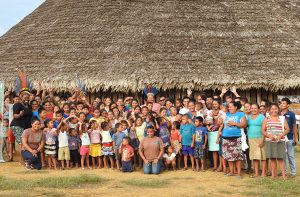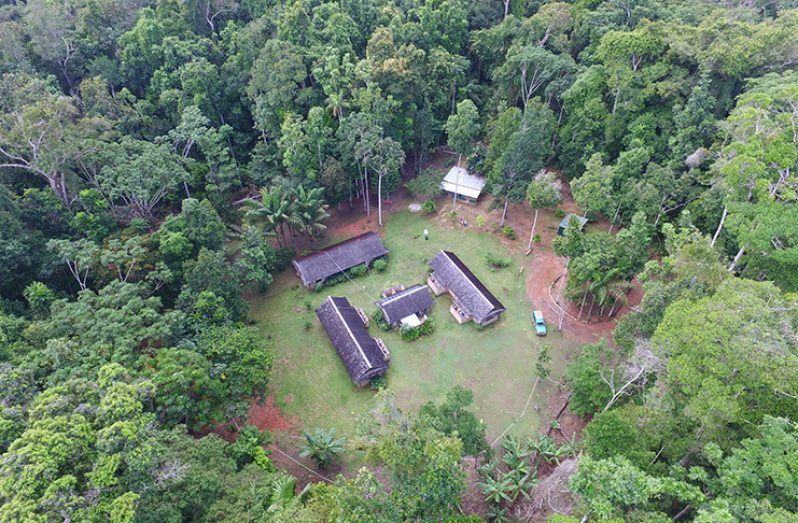THE Iwokrama International Centre for Rainforest Conservation and Development (IIC) commonly known as Iwokrama, is one of five national protected areas in Guyana. The word Iwokrama is of Macushi origin, and translates as “Place of Refuge”.
At the 10th meeting of the Heads of Government of Commonwealth Nations, in Malaysia (1989), the Langkawi Declaration on Environment was adopted. That was a programme of action to combat increasingly serious global environmental threats that were severely degrading the planet. Due to the potential and current impacts these environmental issues were having and their ability to transcend borders, they became matters for serious discussion at the meeting of the heads of Commonwealth. It was at that meeting that H.E Desmond Hoyte, the then President of Guyana, gave the meeting a spirited and practical start by pledging to set aside a significant portion of intact Amazonian forest for a pioneering project, under the Commonwealth and in collaboration with the Government of Guyana. The proposed project would demonstrate that sustainable management of forest and conservation of biodiversity can work hand in hand, thereby lending support for the success of sustainable development as a future model for countries to follow.
Following this offer, Commonwealth leaders asked the Secretary General to organise a visit of a high level team of experts for an exploratory mission trip to Guyana. The site visit was conducted from May 12 to 22, 1990 by a multi-disciplinary team of experts, who, upon conclusion of the mission, proposed a joint Commonwealth-Government of Guyana programme to manage a significant area of rainforest, in a sustainable manner for the benefit of the international community and Guyana. Based on the recommendations received, an area of just over 900,000 acres (360,000 hectares) of intact tropical forested land was made available for the pioneering project, in keeping with the commitment made by President Hoyte. In the following years, work on the proposed programme continued and in 1993, US$3,000,000 was secured from the Global Environment Facility (GEF) to help facilitate legal establishment, demarcation of boundaries, research and institutional development of the project area. Simple operations began by 1994 and further momentum was gained in 1995 with the signing of the Iwokrama agreement by H.E. Dr. Cheddi Jagan, the then President of Guyana and the Secretary General of Commonwealth, H.E. Chief Emeka Anyaoku. Finally in 1996, the Iwokrama Act was passed unanimously by the Parliament of Guyana, thereby officially designating the protected area and establishing what we now know as the Iwokrama Forest. In a subsequent article we will explore the management strucuture of Iwokrama.
Kanashen – “Becoming Guyana’s first Indigenous-Owned Protected Area”
Kanashen is Guyana’s southernmost Amerindian village, located in the Upper Takutu-Upper Essequibo region and shares an international border with Brazil. Kanashen hosts a population of about 300 residents of the Wai Wai indigenous people, who have lived for many years in the forest and open savannahs of this area. The Wai Wais, over the years, continued to practise their indigenous culture, paying strong attention to the management of the ecosystems and unique biodiversity, eventually leading to their landmark move to dedicate all their rainforest to the conservation of biodiversity.
Their journey traces back to 2004 when the Village of Kanashen was awarded – in what is considered globally as one of the truest forms of recognition of traditional rights – absolute title to their ancestral lands. At approximately 3% (or 648, 000 hectares) of Guyana, this massive tropical forest remains isolated and relatively undisturbed in the deep south of Guyana. Along with giving life to the mighty Essequibo River, the largest river in the country, it is home to many species of conservation concern such as the Endangered Brown-Bearded Saki (Chiropotes satanas), Vulnerable Giant Otter (Pteronura brasiliensis), Giant Armadillo (Priodontes maximus), Scarlet Macaw (Ara macao) and Emerald Tree Boa (Corallus caninus) etc.; and the relational ecosystems that support these life forms.
 Being cognizant of external threats such as gold mining and the emerging patterns of culture loss, especially language loss, the Wai Wais took the bold step, in 2007, to designate their land a Community-Owned Conservation Area (COCA) under the Amerindian Act 2006. This new conservation move allowed the Village to train Community Rangers, Elders and other residents in natural resource management. Together as a Village and with the help of Conservation International, a community conservation management plan was implemented for about ten years.
Being cognizant of external threats such as gold mining and the emerging patterns of culture loss, especially language loss, the Wai Wais took the bold step, in 2007, to designate their land a Community-Owned Conservation Area (COCA) under the Amerindian Act 2006. This new conservation move allowed the Village to train Community Rangers, Elders and other residents in natural resource management. Together as a Village and with the help of Conservation International, a community conservation management plan was implemented for about ten years.
In 2013 the Village submitted an application to the Protected Areas Commission requesting to be recognised as a National Protected Area under the NPAS. Over the years the PAC worked closely with the Village to develop a management plan for 2017-2021 and later submitted a joint application to the Government of Guyana for approval. In August 2017, the Government of Guyana legally gazetted the area declaring it a National Protected Area – making it the first Amerindian Protected Area in the National Protected Areas System (NPAS).
How does it work?
The power for decision-making and management lies with the Kanashen Village Council, which employs a Kanashen Amerindian Protected Area (KAPA) Management Team of Rangers to implement the technical work programme of the protected area and its daily operations. However, as a new protected area, significant work is required to make it operational and function effectively. Therefore, in these early stages, technical support to establish crucial management structures is provided by the Protected Areas Commission (PAC), the body mandated to manage the NPAS.
The PAC works with the KAPA Management Team to build its capacity to implement the KAPA five-year management plan. This plan identifies two main themes under which work is to be done: biodiversity management and community development. The former advances protected areas management activities which include biodiversity inventories, monitoring and patrols, data collection and capacity building. The activities are funded by the Protected Areas Trust Fund (PATF). The second theme focuses on community development in the areas of infrastructure, health, ecotourism, and the preservation of the Wai Wai culture. It is intended that Kanashen will eventually become a national and international model for community conservation.
This article was prepared by the Protected Areas Commission in collaboration with Iwokrama and Kanashen Village












